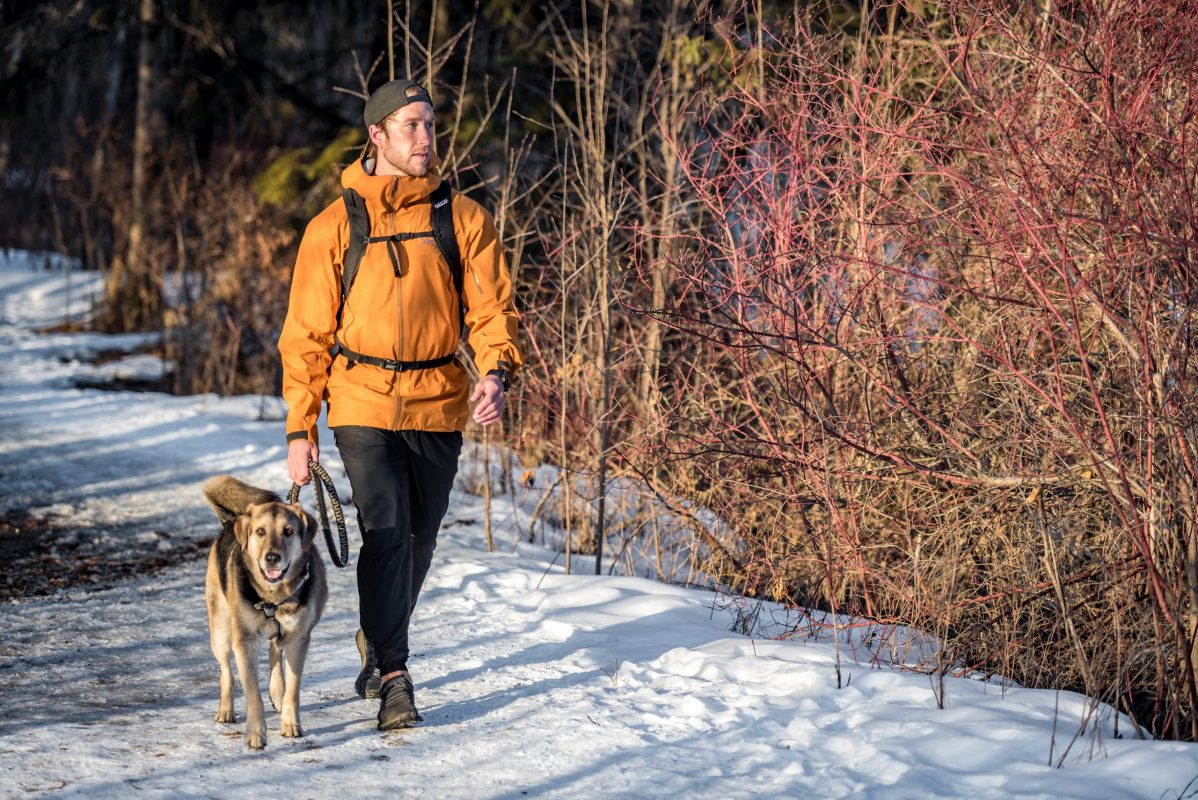With winter well on its way, everyone is putting on their sweaters and fleecy pants while planning their Netflix lineup for the next four months. If you enjoy running, don’t write off taking it outdoors in the winter. Yes, I know it’s cold, especially with that windchill, but that’s nothing the right gear can’t fix!
I used to think people were crazy for running, period. Who would want to do such a monotonous task? How could that be fun? Well, I fell in love with running outdoors since I love being in nature and I would try just about anything to make that happen. To give yourself incentive, pick a park to go running in to start out and you’ll see what I mean. You can pick a paved path or a trail – my favourite!
In this article, I’ll give you some of my tried-and-true tips and tricks to help you enjoy your time in nature during the chilly months.
The Right Gear for the Activity
This is the most important part of being outside in the winter – layers! You can always take them off if you’re warm, but if you are too cold you could risk frost nip, frost bite, or even hyperthermia. The first layer that you need is a thin base layer. This is the innermost layer that should be tight to your skin and composed of either wool or polypropylene to wick moisture away from the body to keep you warm and dry (Stanton, 2010).
The middle layer is an insulating layer and should be what keeps you warm. I don’t recommend down-filled here as it can cause you to sweat more and the feathers will hold a lot of moisture which not only will weigh you down, but also can make you cold. A fleece or thicker wool layer is good here, and you want it to be a little bit loose, so the warm air has a cavity to get trapped in.
Finally, the outer layer is a shell that helps keep the wind and snow out. This should be a waterproof yet breathable layer (Kerr, LaValla, & Smith, 2019). You don’t want to be wearing a sweat suit as any wetness risks you getting cold quick. Sometimes you can find shells with zippers under the arms which are fantastic for ventilation when you’re starting to get too warm. If it’s closer to -25°C outside, a puffy vest can be beneficial, not only for keeping you warm, but also for using the inner pocket to keep your phone from getting too cold so you don’t lose your tunes mid-run!
Your legs don’t tend to get too cold when you’re running since they are the powerhouse to your run, so you don’t need to go too crazy with layering there. I usually wear brushed or fleece lined leggings to keep the bite from the wind off, and when it’s really cold, you can add a wool base layer underneath.
Protecting the extremities are also very important in those cold temperatures. Fleece-lined gloves with tech-friendly fingertips or fingerless gloves are great at keeping the cold off your hands. I haven’t found the need to buy special winter running shoes as long as you stick to the snow-covered areas of the sidewalk, you’re less likely to encounter a slip. I personally always wear merino wool socks so if you get too warm and sweat, they will still keep you warm.
A neck warmer or balaclava can be worn around your neck or pulled up above your nose if your face gets chilly. I usually start my run with my neck warmer up just to keep my face warm at the beginning and you can always pull it down if it’s too warm. A thin toque is more than enough to keep the heat in. If it’s warmer than -15°C, you can usually get away with a fleecy headband or ear warmers.
One thing a lot of people don’t consider in the winter are sunglasses! If it is a sunny day, the snow and ice reflect the sun a lot more than it would mid-summer. I always recommend polarized sunglasses as it cuts down on the glare so you can see better. There are actually some brands out there made for sports so they don’t bounce around on your nose or fall off your face. If it’s a colder day, ski goggles can make a huge difference as any exposed skin can be fair game for frostbite.
Tips for Running Safely Outdoors
Now that we’ve covered the right gear for the job, lets talk about some tips for when you’re thinking about giving winter running a try. First and foremost, planning! A little bit of planning goes a long way. Make sure you plan out your route on a map before you head out and screenshot it on your phone if you have to. Try not to venture too far from home if it’s -30°C or if there’s a bad windchill.
It’s always a good idea to have your phone, your ID, and your keys with you in case you get too cold and need a ride back home. Make sure you let someone know where you are going and for how long so they can keep tabs on you.
It’s best to remove layers as you get comfortable so you don’t become sweaty. Once that wetness is exposed to the wind and cold, it freezes very quickly and even though you’re moving your body, it can’t keep up with the heat loss.
Frostbite is your biggest concern when heading outdoors in the winter. Depending on the windchill, it can happen in just minutes on exposed skin. Listen to your body, if you feel cold and are starting to get numbness or pain on your skin, you could be getting frostbite, or at the very least, frostnip. Don’t be a hero. If it’s too cold out, or a blizzard, just stay inside!
Bio
Laura was born and raised in Edmonton, AB and currently lives in Regina, SK with her family. She is in her second year of the Personal Trainer program at NAIT and hopes to help motivate women on their fitness journey. When she isn’t doing schoolwork or looking after her 19-month-old son, she can be found outside enjoying whatever Mother Nature throws at her. You can find Laura on Instagram @prairie_skies.









